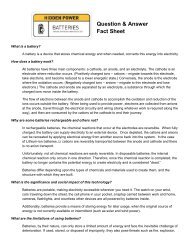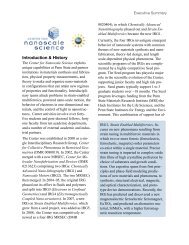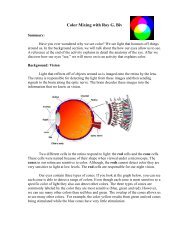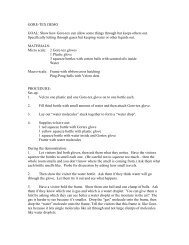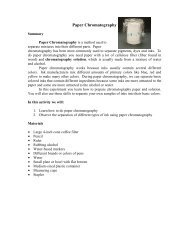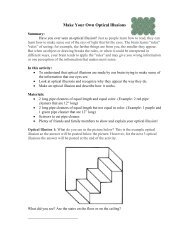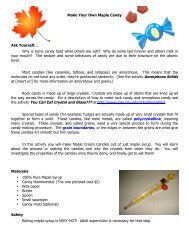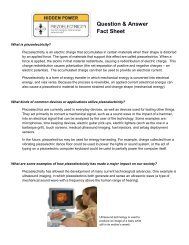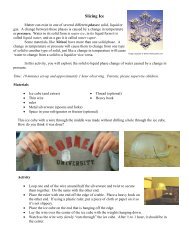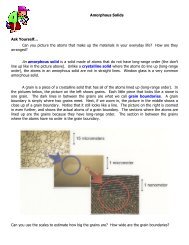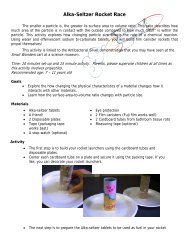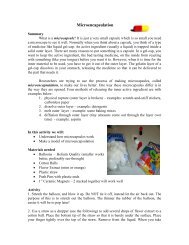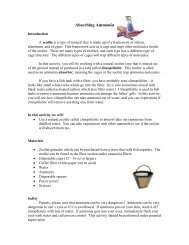Question & Answer Fact Sheet
Question & Answer Fact Sheet
Question & Answer Fact Sheet
You also want an ePaper? Increase the reach of your titles
YUMPU automatically turns print PDFs into web optimized ePapers that Google loves.
What kinds of devices or applications currently, and in the future, utilize this scientific concept?<br />
One obvious application of thermoelectricity is the thermoelectric generator, which converts heat to<br />
electricity. Such generators have already found wide uses by oil companies to power remote stations<br />
and by NASA to power spacecraft. However, the use of the thermoelectric generator among the<br />
general public has been limited until fairly recently. Thermocouples, which are an essential component<br />
of many electric thermometers and heating control devices, also use the thermoelectric effect.<br />
Other applications take advantage of the reverse process of thermoelectricity, using electricity to heat<br />
up or cool down devices. Small heaters and refrigerators whose operation is based on this effect have<br />
been developed.<br />
How will this scientific concept impact our society? What are the pros and cons of its usage?<br />
An inherent problem with much of our current energy use is the tremendous amount of waste heat that<br />
is produced. Using thermoelectric devices, this unused waste heat (from car exhaust, industry and<br />
manufacturing processes, home and office heating systems, computers, lighting, etc.) could be<br />
harnessed and converted to electricity. Another advantage of thermoelectric devices is that they have<br />
no moving parts, they are quiet and reliable, and they can be very small and easily portable.<br />
Unfortunately, the electric potential produced using thermoelectrics is currently very low. Therefore, in<br />
order to obtain a high enough total voltage to be usable, multiple thermoelectric generators must be<br />
connected in series together, which in turn greatly increases the electric resistance, causing much of<br />
the electrical energy created to be wasted as heat again. Thermoelectricity will only find widespread<br />
use when its efficiency can be improved.<br />
What’s happening on the cutting edge of research in this area right now?<br />
In order to perform efficiently, thermoelectric materials must have the following two properties<br />
simultaneously:<br />
1. High electrical conductivity (so that electrons can move freely through the material)<br />
2. Low thermal conductivity (so that a large temperature difference (heat flow) can be created and<br />
maintained across the material)<br />
Unfortunately, these properties are not unrelated to each other; therefore, improving one often conflicts<br />
with improving the other. Current research is looking at new ways to improve the efficiency of<br />
thermoelectric materials by manipulating these and other related properties. The methods being used<br />
require the use of nano-engineering and nano-technology to manipulate the molecular structures of<br />
thermoelectric materials at the nano-scale level.<br />
One strategy used to decrease thermal conductivity involves adding extra atoms to the crystal (called<br />
"doping"). These atoms disrupt the transfer of heat by the lattice vibrations (which are called<br />
"phonons"), while still allowing the electrons to move through the crystal. Another way of lowering<br />
thermal conductivity involves introducing interfaces that prohibit the phonon heat transfer but still allow<br />
electrons to pass through.



